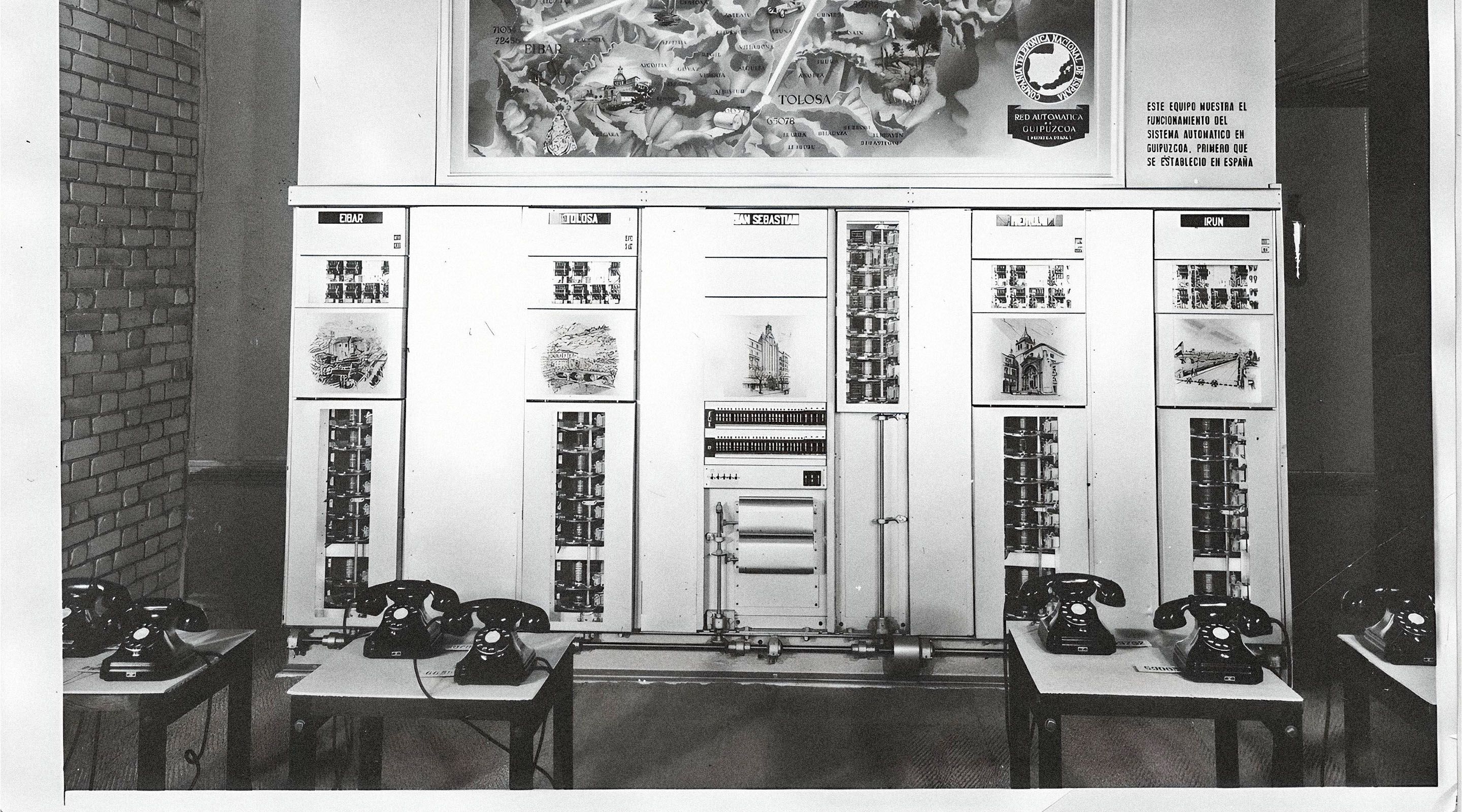
1955
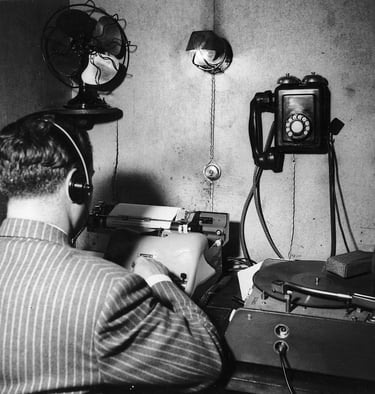
Only ten countries in the world had more active lines than Spain. The milestone of the first million phones gives an idea of a country that is modernising, opening up to tourism and starting to take off.
One million telephones
01
In 1955, with José Navarro-Reverter as chairman, Telefónica made Spain the eleventh country in the world to reach one million telephones installed. Before the explosion of tourism and the definitive opening of Spain to the world, the country was beginning to show signs of modernity and the popularisation of the telephone in homes was undoubtedly one of them. The telephone - these were the years of the classic black Bakelite models - was beginning to become a domestic necessity and also an engine of economic development for Spain.
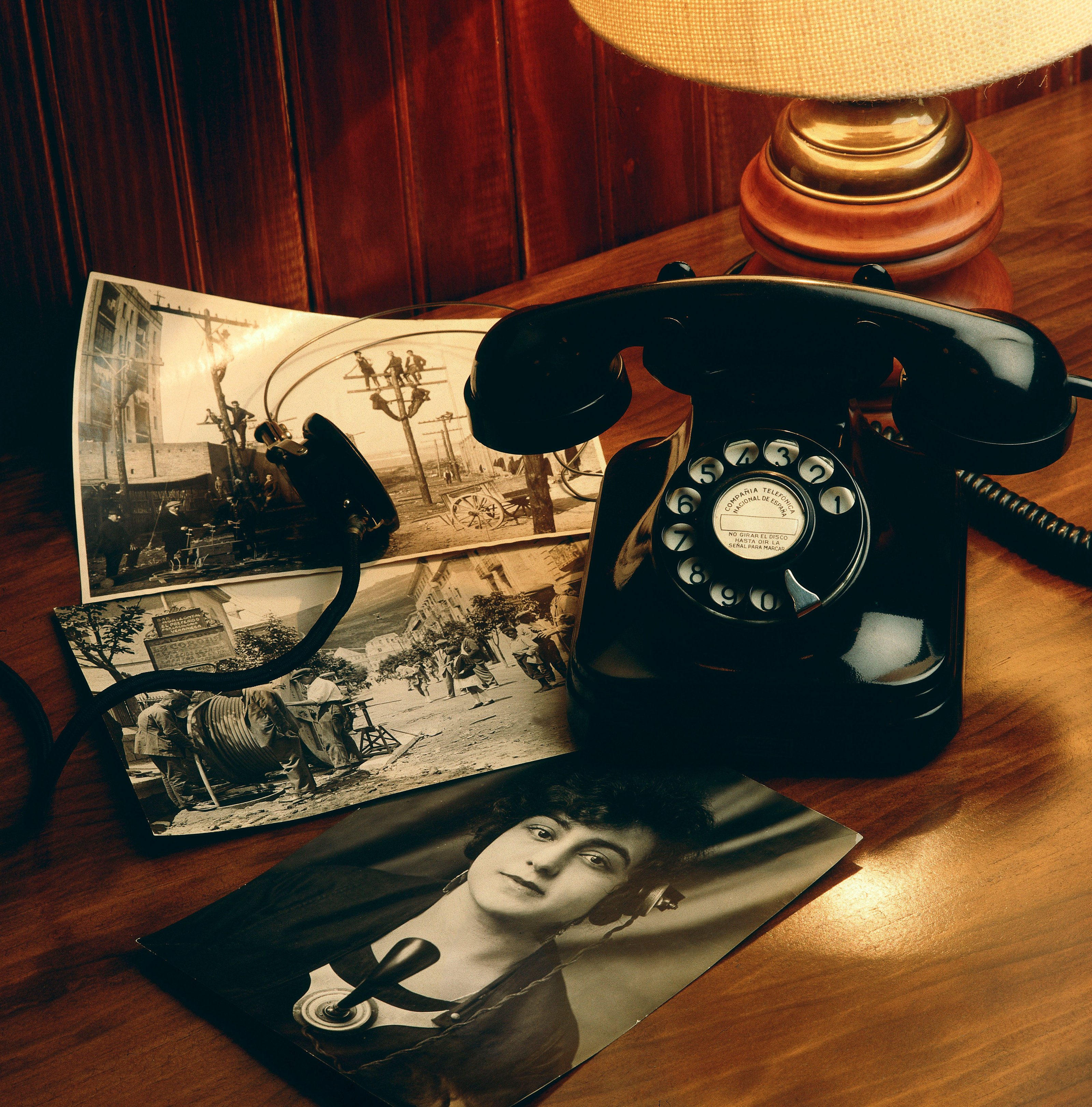
All capitals, automated
02
At the same pace as the installation of lines, the number of calls made through telephone operators is growing: 1955 ends with no less than 80 million intercity communications managed. Spaniards are getting used to calling by telephone, and the company is speeding up the process of automating its exchanges to handle all this traffic. The incorporation of Teruel completes the map of provincial capitals with automatic exchanges. But it was still many, many years - more than 30 years - before the entire telephone service in the country could function without the intervention of our beloved telephone operators.
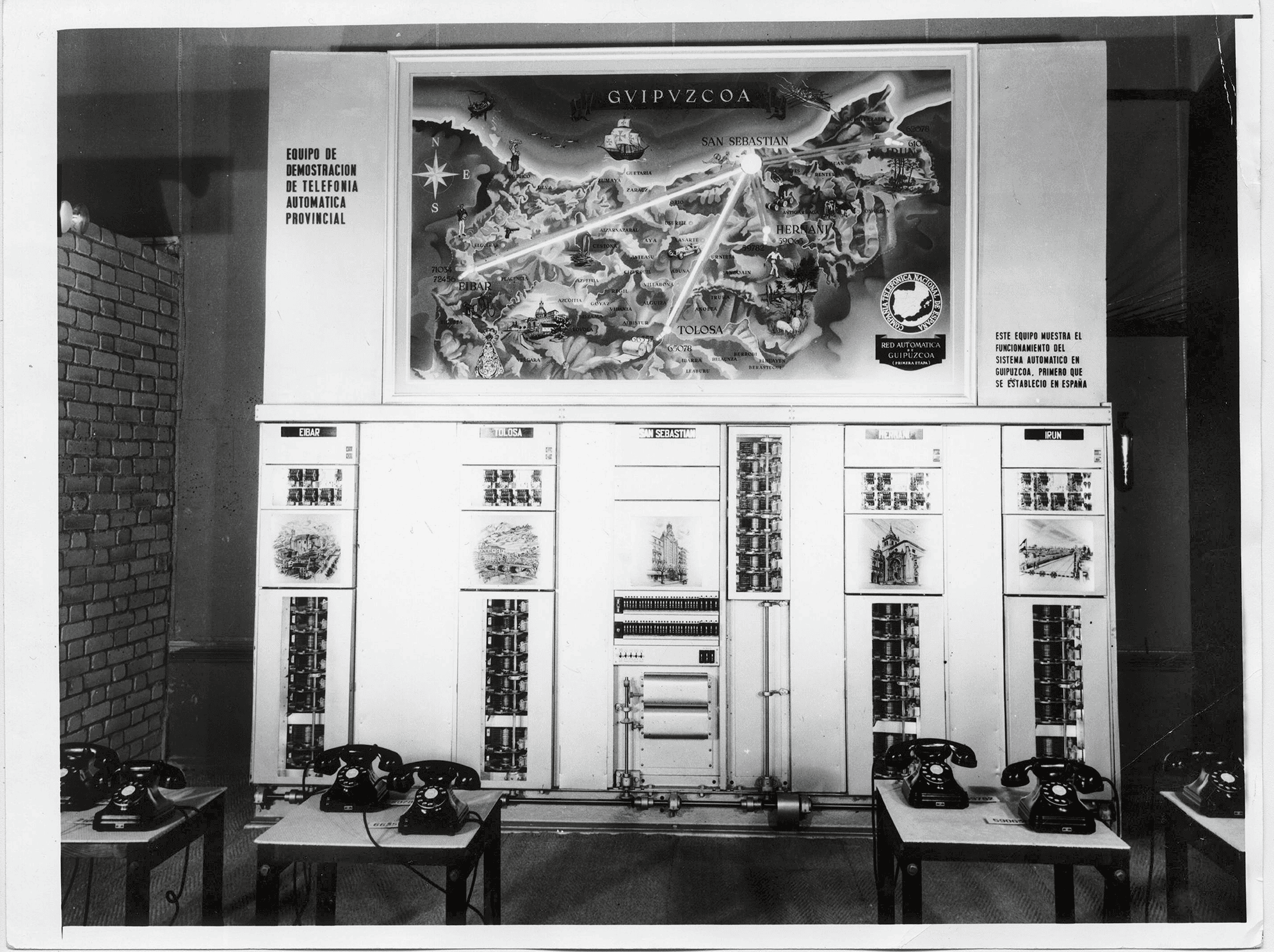
The American friend
03
In 1953, Spain signed a bilateral defence agreement with the US -under the presidency of Eisenhower- known as the Pact of Madrid, which allowed the installation of four important US military bases on Spanish soil: Rota and Morón, in Andalusia, and still in force, Torrejón (Madrid) and Zaragoza, the latter two dismantled in the early 1990s. Two years later, in 1955, Telefónica became the "technological partner" of the US Air Force after an agreement was reached to connect the four military bases by telephone and integrate them into the national telephone network. An agreement, the chairman explained in his letter to the shareholders, 'very satisfactory for both parties [...] on the basis of a firm and reciprocal trust'.
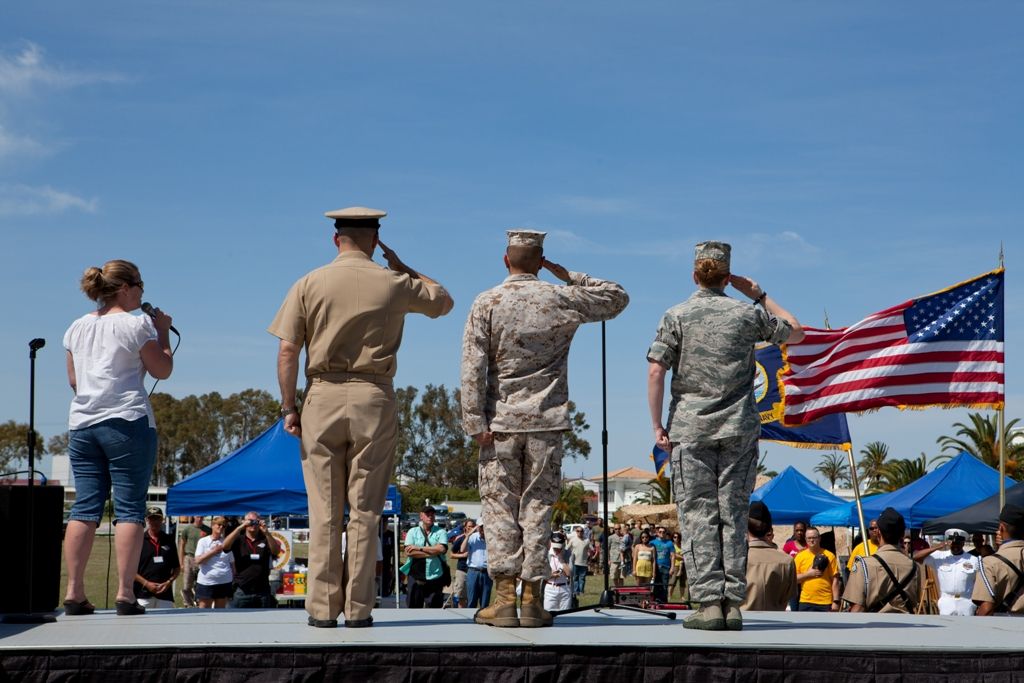
Do you have doubts about what happened?
Ask Aura